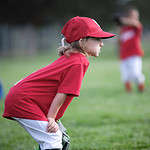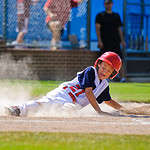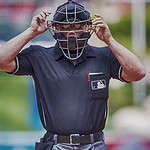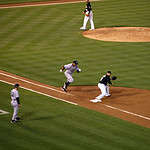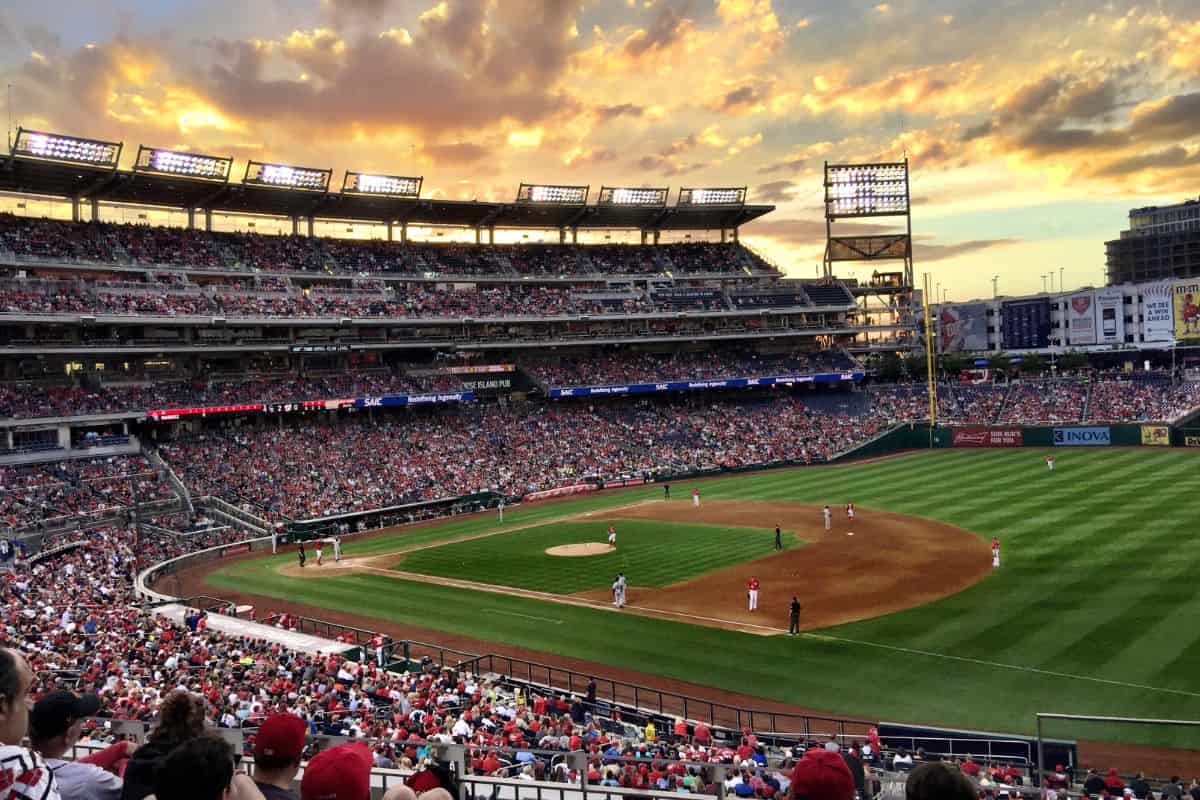Football cleats and baseball cleats are two different types of shoes designed for two different sports. While they may look similar at first glance, there are some key differences between the two that make them better suited for their respective sports. In this article, we will take a closer look at football cleats vs baseball cleats and explore the differences between them.
Football cleats are designed with traction in mind. They have longer studs or spikes on the bottom of the shoe to provide better grip on turf or grass surfaces. In contrast, baseball cleats have shorter spikes that are evenly distributed across the sole of the shoe. This design allows for better traction on dirt and clay surfaces, which are commonly found on baseball fields. While both types of cleats provide traction, the difference in design is what makes each one better suited for its respective sport.
When it comes to choosing between football cleats and baseball cleats, it’s important to consider the specific needs of your sport. While football cleats may provide better traction on turf or grass, they are not as effective on dirt or clay surfaces. Similarly, baseball cleats may not provide enough traction on turf or grass, which can lead to slips and falls. By understanding the differences between the two, you can make an informed decision and choose the right cleats for your sport.
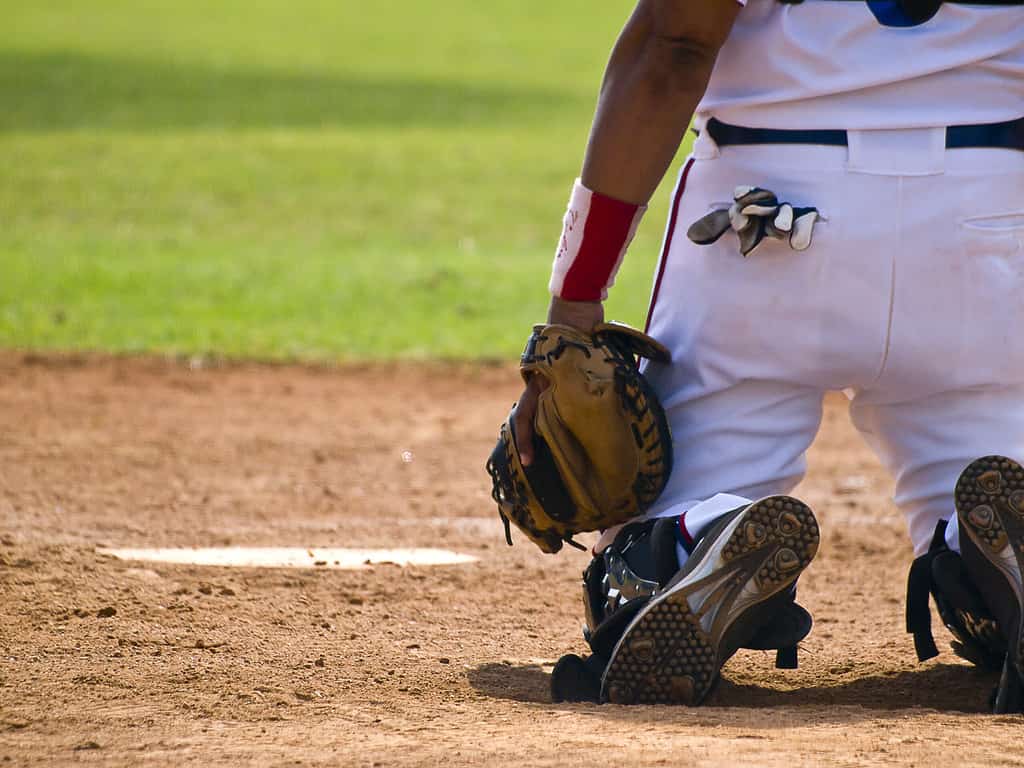
Understanding Cleats
Cleats are a type of shoe that is designed for sports that require traction on grass, dirt, or other natural surfaces. They are commonly used in football and baseball, as well as other sports like soccer and lacrosse. Cleats are essential for these sports because they provide the necessary grip and stability to help athletes perform at their best.
Types of Cleats
There are three main types of cleats: metal, molded, and plastic. Metal cleats have metal spikes that are screwed into the sole of the shoe. They provide the most traction, but are also the most dangerous, as they can cause serious injury if a player is stepped on. Molded cleats have rubber or plastic studs that are molded into the sole of the shoe. They provide good traction and are safer than metal cleats. Plastic cleats have plastic studs that are molded into the sole of the shoe. They provide the least amount of traction, but are the safest option.
Materials
Cleats can be made from a variety of materials, including leather, synthetic materials, and mesh. Leather cleats are durable and provide a comfortable fit, but are more expensive than synthetic options. Synthetic materials are lighter and more affordable than leather, but may not be as durable. Mesh cleats are the lightest option, but are not as durable as leather or synthetic materials.
Design
The design of a cleat can also impact its performance. High-top cleats provide more ankle support, while low-top cleats allow for greater mobility. Cleats with a wider base provide more stability, while cleats with a narrower base allow for quicker movements.
Studs and Spikes
The type of studs or spikes on a cleat can also impact its performance. Bladed studs provide more traction on firm surfaces, while conical studs provide more traction on softer surfaces. Metal spikes provide the most traction, but are not allowed in some leagues due to safety concerns.
Surface
The type of surface that a player will be playing on can also impact the type of cleat that is needed. For example, football cleats designed for turf may have shorter studs than those designed for grass.
Features
Some cleats come with additional features, such as removable studs or extra padding for comfort. These features can add to the cost of the cleat, but may be worth it for some athletes.
In conclusion, understanding the different types of cleats, materials, designs, studs and spikes, surfaces, and features can help athletes choose the best cleat for their sport and playing conditions.
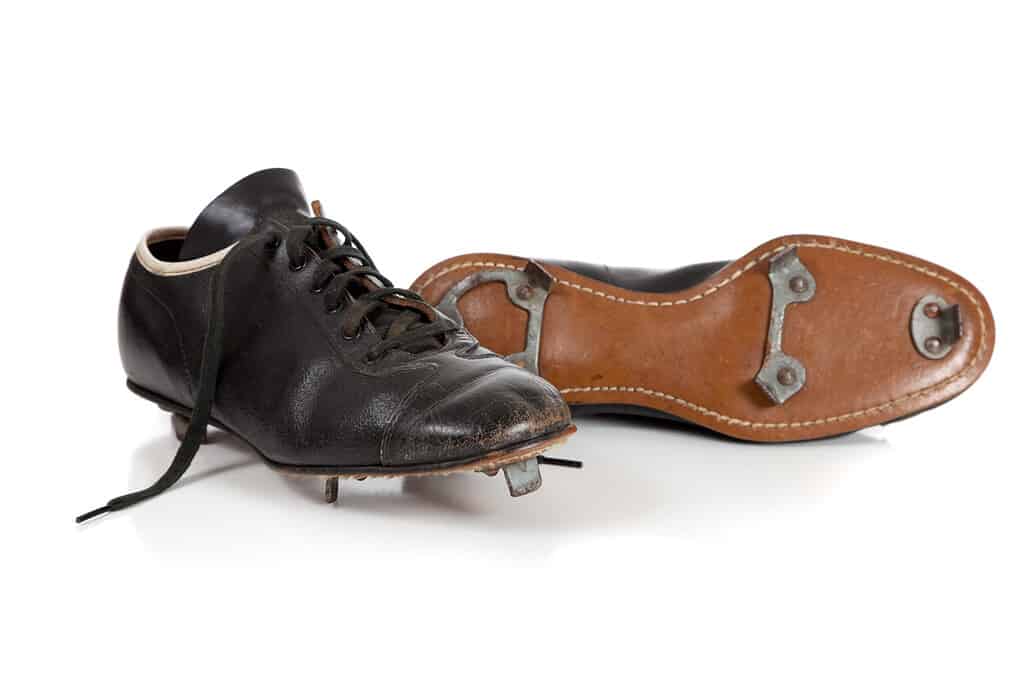
Football Cleats
Football cleats are specifically designed for the sport of football, providing players with the necessary support and traction to perform at their best on the field. The right pair of football cleats can make a significant difference in a player’s performance, comfort, and safety.
One of the most important features of football cleats is their ankle support. Football players make quick cuts and changes in direction, so ankle support is crucial to prevent injuries. High-top football cleats provide extra ankle support, making them a popular choice for offensive linemen and other players who need extra stability.
Another key feature of football cleats is their rigid sidewalls, which help prevent ankle injuries by limiting the movement of the foot. The shape of football cleats is also designed to provide stability, with a wider base and more cushioning than baseball cleats.
Football cleats are typically made from leather or synthetic materials, with ventilation holes to keep feet cool and comfortable. The knobs on the bottom of football cleats are larger and more numerous than those on baseball cleats, providing better traction on turf and natural grass.
Overall, football cleats are designed to provide maximum support, stability, and traction for football players. They are an essential piece of equipment for anyone who plays the sport and can make a significant difference in a player’s performance and safety on the field.
Baseball Cleats
Baseball cleats are designed specifically for the sport and provide excellent traction and support on the field. They come in a variety of styles and materials, including metal spikes and synthetic options.
Pitchers, in particular, benefit from baseball cleats with a sturdy midsole and good balance, which helps them maintain their footing and avoid injury during their wind-up and delivery.
For players who do a lot of sliding, cleats with a toe spike and toe guard can provide added safety and protection. Catchers also benefit from cleats with good lateral support, which helps them move quickly and efficiently behind the plate.
In terms of color and style, baseball cleats come in a range of options, from classic black and white to bold and vibrant patterns. Mesh materials are popular for their breathability and comfort, while detachable cleats allow for customization and versatility on different field surfaces.
Overall, baseball cleats are an essential piece of equipment for any player, from youth baseball to the professional level. With the right pair of cleats, players can feel confident and secure on the field, allowing them to focus on their performance and enjoy the game.
Comparing Football and Baseball Cleats
Football and baseball cleats are both designed to provide traction and stability on the playing surface. However, there are several differences between the two types of cleats that make them suitable for their respective sports.
Design and Material
Football cleats are typically heavier and sturdier than baseball cleats. They are designed to provide more support and stability for the foot and ankle, as football players often make sudden stops and changes of direction. Football cleats are also made of thicker and more durable materials, such as leather and synthetic materials.
Baseball cleats, on the other hand, are lighter and more flexible. They are designed to allow for greater mobility and speed, as baseball players need to be able to run and slide quickly. Baseball cleats are made of softer and more breathable materials, such as mesh and synthetic materials.
Cleat Type and Surface
Football cleats generally have longer studs or spikes than baseball cleats. This is because football is played on grass or turf, which requires more traction to prevent slipping. Baseball cleats, on the other hand, have shorter studs or spikes, as they are designed for use on dirt or artificial turf.
Football cleats also come in different types, such as molded cleats and detachable cleats. Molded cleats are permanently attached to the sole of the shoe, while detachable cleats can be removed and replaced with different lengths and types of studs. Baseball cleats typically only come in molded cleat designs.
Performance and Injury Prevention
Football cleats are designed to provide more ankle support and stability, which can help prevent ankle injuries. They also have more cushioning and padding to absorb impact and reduce the risk of foot and leg injuries. Baseball cleats, on the other hand, are designed to be more lightweight and provide more flexibility, which can help improve speed and agility on the field.
In conclusion, while football and baseball cleats share some similarities in terms of traction and stability, they are designed to meet the specific needs of their respective sports. Football cleats are heavier and sturdier, with longer studs or spikes, while baseball cleats are lighter and more flexible, with shorter studs or spikes. Ultimately, choosing the right type of cleat can help optimize performance and prevent injuries on the field.
Choosing the Right Cleats
When it comes to choosing the right cleats for your sport, there are a few key factors to consider. Whether you’re playing football or baseball, the right cleats can make a big difference in your performance and safety on the field. Here are some important things to keep in mind when choosing the right cleats:
Support and Comfort
Both football and baseball require a lot of running and quick movements, so it’s important to choose cleats that provide good support and comfort. Look for cleats with a well-cushioned insole and a supportive midsole to help absorb shock and reduce the risk of injury. It’s also important to choose cleats that fit well and feel comfortable on your feet.
Material and Durability
The material of your cleats can impact their durability and overall performance. Football cleats are typically made from synthetic materials that are durable and lightweight, while baseball cleats are often made from leather for added durability. Look for cleats that are made from high-quality materials that can withstand the wear and tear of your sport.
Grip and Traction
Grip and traction are important factors to consider when choosing cleats. Football cleats typically have longer studs or spikes to provide better traction on grass or turf, while baseball cleats have shorter studs for better grip on dirt or clay. Make sure to choose cleats with the right type of studs or spikes for your sport and playing surface.
Injury and Safety
Injuries can happen in any sport, so it’s important to choose cleats that provide good support and protection. Look for cleats with reinforced toe caps and ankle support to help reduce the risk of injury. It’s also important to choose cleats that fit well and feel secure on your feet to reduce the risk of slipping or twisting an ankle.
Breathability and Adjustability
Both football and baseball require a lot of running and sweating, so it’s important to choose cleats that are breathable and adjustable. Look for cleats with mesh or perforated uppers to allow for better airflow and ventilation. It’s also important to choose cleats with adjustable laces or straps to help customize the fit and reduce the risk of blisters or discomfort.
Versatility
Finally, it’s important to choose cleats that are versatile and can be used for different playing surfaces and conditions. Look for cleats with removable studs or spikes that can be swapped out for different lengths or styles. This can help you adjust your cleats to different playing surfaces and conditions, and can also help extend the life of your cleats.
Conclusion
In conclusion, choosing between football cleats and baseball cleats depends on the sport you are playing and your personal preferences. Both types of cleats offer unique features that optimize performance in their respective sports.
Football cleats are designed for traction and stability on grass and turf. They have longer studs or spikes that provide better grip and prevent slipping on the field. They also offer more ankle support and padding to protect against impact and injuries.
On the other hand, baseball cleats are designed for speed and agility on dirt and clay. They have shorter studs or spikes that allow for quick movements and better control on the field. They also have a lighter and more flexible construction that allows for better footwork and maneuverability.
It is important to note that while football and baseball cleats may look similar, they are not interchangeable. Using football cleats for baseball or vice versa can result in discomfort, poor performance, and even injuries.
As a sports enthusiast, it is essential to invest in the right type of cleats for your chosen sport. Consider factors such as field surface, weather conditions, and personal preferences when choosing between football and baseball cleats.
Overall, football cleats and baseball cleats are both great options for optimizing performance in their respective sports. By choosing the right pair of cleats, you can enhance your game and enjoy a more comfortable and successful experience on the field.

Frequently Asked Questions
Can you wear baseball cleats to play football?
No, you should not wear baseball cleats to play football. Baseball cleats have a different design and traction pattern than football cleats, which can lead to a higher risk of injury. Football cleats have longer spikes and are designed to provide better traction on grass and turf fields, while baseball cleats have shorter spikes and are designed for dirt and grass fields.
Can my kid wear baseball cleats for football?
No, it is not recommended for kids to wear baseball cleats for football. They may not provide the necessary support and traction needed for the sport, which could increase the risk of injury. It is important to invest in a pair of football cleats specifically designed for the sport.
Can you wear football cleats for softball?
Yes, you can wear football cleats for softball. Football cleats and softball cleats have similar designs and traction patterns, making them suitable for both sports. However, it is important to check with your league or coach to ensure that football cleats are allowed for softball games.
Football cleats vs soccer cleats?
Football cleats and soccer cleats have different designs and traction patterns. Football cleats have longer spikes and are designed for grass and turf fields, while soccer cleats have shorter spikes and are designed for natural grass and artificial turf fields. Additionally, soccer cleats tend to have a flatter sole, while football cleats have a more pronounced heel.
Can you wear football cleats for soccer?
No, you should not wear football cleats for soccer. Football cleats have longer spikes and a different traction pattern than soccer cleats, which can lead to a higher risk of injury. Soccer cleats are designed to provide better traction and support for the sport.
What is the difference between football cleats and football shoes?
Football cleats have longer spikes and are designed to provide better traction on grass and turf fields. Football shoes, on the other hand, have a flatter sole and are designed for indoor and artificial turf fields. Football shoes are also typically lighter and more flexible than football cleats, making them easier to move around in.
- UCLA Softball: Let’s Go Bruins! - February 12, 2024
- Youth Softball Helmet Buying Guide: Keep ‘Em Safe - February 12, 2024
- Youth Softball Pants: Our Top Picks for Your Top Player - February 12, 2024

